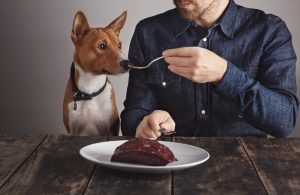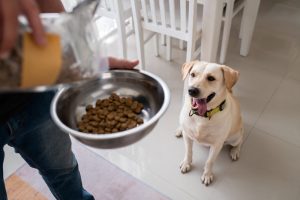Is Your Pet Getting the Right Nutrition?
Most pet owners search for high-quality nutritional products yet they struggle to detect these products. Having improper nutrition leads to obesity and digestive problems as well as allergies which produce various persistent health difficulties. Silencing the right pet food choice becomes complicated because numerous pet food brands offer various diet types. The complete pet care requires you to provide a balanced diet. Following this guide enables you to find superior food that delivers better nutrition for your pet.
Understanding Your Pet’s Nutritional Needs
Pet dogs and cats need proper nutrition that fully supports their health requirements for vitality and immune function and coat health
. Key nutrients include:
- Protein: Supports muscle growth and repair. Choose top-quality protein foods including fish, beef and chicken among others.
- Fats : Provide essential fatty acids for brain function and skin health. Omega-3 and omega-6 are crucial.
- Carbohydrates: When feeding carbohydrates to pets proprietors should use brown rice and sweet potatoes as complete ingredients to provide energy.
- Vitamins and minerals: Promote bone strength, vision, and organ function. The proper nutrients for your pet include both calcium and phosphorus combined with vitamins A, D and E.
- Water: The necessity of hydration for the body matches the essential importance of food. Fresh water needs to be obtainable at all times.
A pet’s nutritional needs vary based on age, breed, and activity level. Consulting a VIP pet care professional can help tailor a diet suited to your pet’s health.
Commercial Pet Food vs. Homemade Diets: What’s Better?

Pet owners constantly debate whether their pets should eat commercial food from stores or receive homemade foods. Between these two options exist different advantages and disadvantages:
- Commercial Pet Food: Store-bought commercial pet food offers effortless convenience plus nutritional alignment along with government monitoring for quality standards. The health benefits of brand food for pets remain limited by their inclusion of fillers, artificial additives and preservatives.
- Home Made Diets: The ability to control ingredients completely exists through homemade diets but owners need to plan their meals thoroughly. When pets receive inadequate nutrient proportions they fail to obtain necessary vitamins. Homemade prepared pet meals require veterinary supervision at all times.
How to Read Pet Food Labels Like a Pro
Deciphering pet food labels is crucial for making informed choices:
- Ingredients should start with whole protein sources which include chicken, lamb or fish.
- The dog food should contain real protein sources as the first ingredient and exclude artificial preservatives and by-products and excessive fillers such as corn and soy.
- Natural and premium markings on dog food packages typically do not reflect superior quality standards.
- Conduct a verification check that the food product satisfies AAFCO standards because they assure complete nutritional balance.
Common Food Allergies and Sensitivities in Pets
Food allergies are a growing concern among pet owners. Signs of food sensitivities include:
- Itchy skin or excessive scratching
- Digestive issues like vomiting or diarrhea
- Chronic ear infections or paw licking
- Red, inflamed skin or rashes
Several food trigger allergens exist from dairy to beef and wheat together with artificial additives. To determine safe substances for your pet the VIP pet care team will assist with allergy identification. Changes to a hypoallergenic diet with minimal ingredients have been proven to enhance symptoms.
Compare Serving Size, Not Package Weight
Arguably the perception among pet owners is that bigger food packages provide better value but accurate portioning stands as the core issue. Pet owners should examine calorie density between brands because different brands possess dissimilar calorie contents while following the feeding guidelines remains essential. The quantity of calories varies between different brands of pet food contained inside one cup. Measuring food servings accurately stops animals from receiving excess portions because overfeeding promotes obesity alongside various medical issues.Professional vet checkups help you confirm whether your pet receives proper quantities of food.
Feed to Your Animal’s Age and Energy Level
A pet needs proper nutrition that depends on how young or old it is coupled with its daily motions. Puppies alongside kittens need protein-rich diets along with increased calories to support their development process yet older dogs and cats need balanced food with reduced calories to stop their weight from increasing. Active breeds consume higher amounts of energy so their food should contain protein while lower activity breeds require controlled feeding plans to manage their weight properly. Changing meal portions combined with dietary selection during your pet’s aging process will guarantee they obtain proper nutrition throughout their life stages.
How to Choose the Right Food for Your Dog’s Age and Breed

Dogs have different dietary requirements depending on their life stage and breed:
- Puppies – Require high-protein and calorie-dense food for growth. DHA (a type of Omega-3) supports brain and vision development.
- Adult Dogs –A person needs proper food balance to preserve their energy storage. Glucosamine along with other joint-support ingredients suits the needs of large breeds.
- Senior Dogs – Benefit from lower-calorie diets to prevent obesity and joint-friendly nutrients for mobility.
Breed-specific factors also play a role:
- Small breeds – Have faster metabolisms and may need calorie-rich food.
- Large breeds – Require controlled calcium levels to prevent bone issues.
- Active breeds – Need higher protein for muscle maintenance.
Consulting a veterinarian helps ensure your dog’s diet meets their specific needs.
Wet Food vs. Dry Food: Which is Better?
Pet owners often debate whether wet or dry food is best:
- Wet Food: Higher moisture content, great for hydration and digestion. Best for pets with dental issues or sensitive stomachs.
- Dry Food: Supports dental health by reducing plaque buildup. More convenient and cost-effective for long-term feeding.
A combination of both can provide balanced nutrition while catering to individual pet preferences.
Homemade Treats and Safe Human Foods for Pets
Pet owners commonly feed food to their pets though not every human food choice is secure for pets. The safe human foods for dogs consist of carrots, blueberries, plain cooked chicken and pumpkin. Pet owners should completely stay away from toxic foods which include chocolate, onions, garlic, grapes and artificial sweeteners. Homemade pet treats present an excellent substitute where store-snacks usually take their place. Peanut butter (no xylitol) combined with oats and bananas allows owners to make simple yet nutritious safe homemade pet treats.
Creating a Long-Term Feeding Plan for a Healthy Pet
The key to a healthy pet depends on providing them with regular meals that offer nutritional value. A 7-10 day adaptation period for new foods prevents gastrointestinal discomfort in pets. Monitoring your pet portions according to activities and body weight helps prevent obesity. Adjustments to the diet throughout different times of the year guarantee pets receive proper energy amounts for their needs. Your pet will maintain their health track through both veterinarian visits and by watching their weight and energy levels.
Conclusion: Making the Best Food Choices for Your Pet
The right mix of nutrition represents an essential element for achieving excellent pet healthcare. Activating the correct nutrition plan leads pets toward extended periods of well-being. Consistent vet check-ups together with high-quality ingredients selection along with pet-specific dietary needs education results in superior pet care. Prioritizing your pet’s health through commercial or homemade feeding choices ensures their happiness together with their constant activity in the upcoming years. Professional VIP pet care services will assist you in developing an optimal diet plan for your pet.